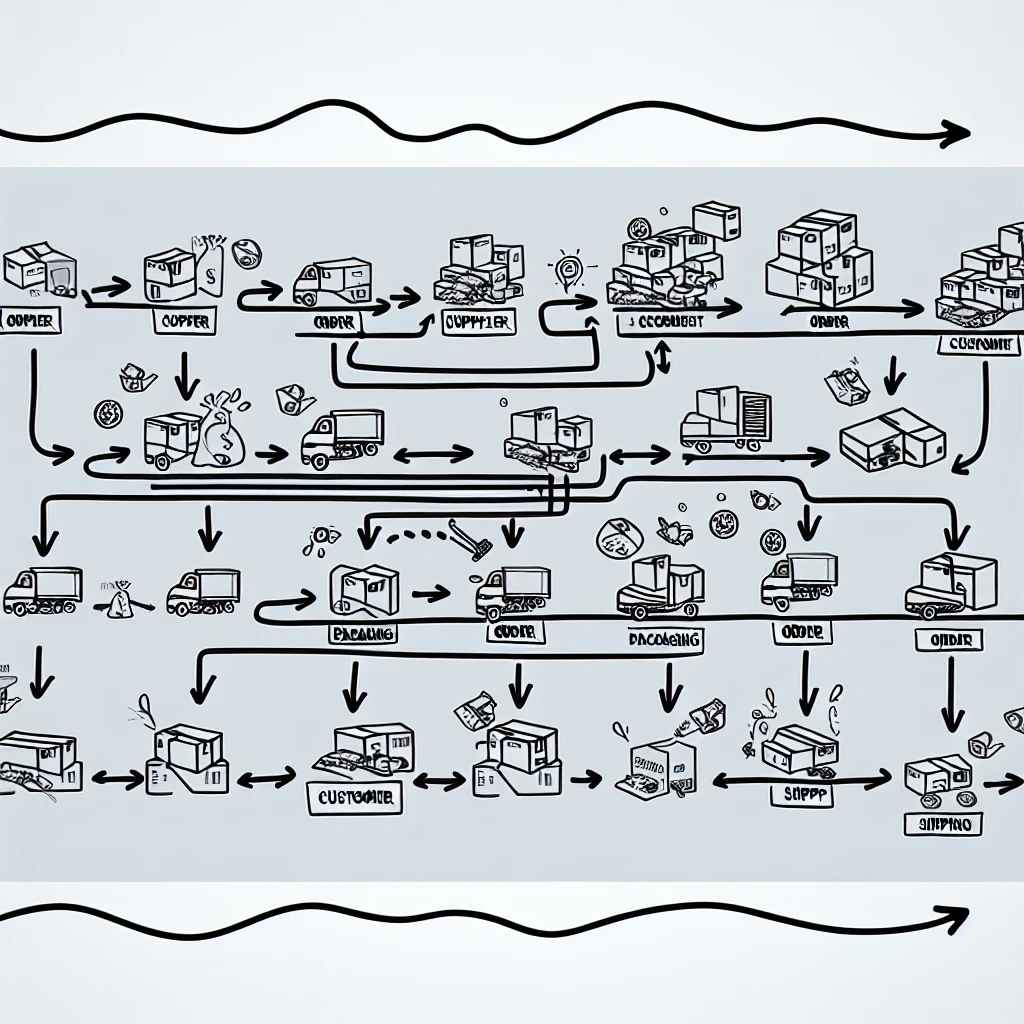What is Inventory Turnover?
Imagine you're a high-stakes player in the bustling world of ecommerce. Your warehouse is your playing field, and your products are the chips you've got on the table. Now, there's one term that should be on the tip of your tongue: inventory turnover. This isn't just some mundane metric; it's the pulse of your product management, the rhythm of your retail success. So, what exactly is inventory turnover? It's a measure of how many times a company sells and replaces its stock of goods during a certain period. Think of it as a dance between your products and your customers. The faster the dance, the livelier your business.
But why does inventory turnover deserve your undivided attention? In the digital marketplace, where every click can lead to a sale, inventory turnover stands as a critical Key Performance Indicator (KPI). It tells you how well you're playing the game. A high turnover rate indicates that you're selling goods like hotcakes, keeping up with trends, and satisfying customer cravings. On the flip side, a low turnover means your goods are gathering dust, tying up your capital, and potentially missing out on the market's beat.
For ecommerce entrepreneurs, mastering inventory turnover is akin to mastering the art of balance. It's about having just enough stock to meet demand without overburdening your storage with unsold products. It's a delicate act, but get it right, and you'll see the magic happen: sales increase, storage costs decrease, and your cash flow starts to sing. To thrive in the competitive ecommerce arena, you must sharpen your inventory strategies, align them with consumer trends, and adapt to the ever-changing online landscape.
So, as we delve deeper into the world of 'Optimizing Inventory Turnover to Boost Ecommerce Profitability,' keep this in mind: inventory turnover isn't just a number. It's a story of how your products move from shelf to shipment to satisfaction. It's a tale of how your business breathes, grows, and ultimately, how it succeeds. Stay tuned as we explore strategies to improve your turnover rate and examine its impact on your cash flow. Because in ecommerce, every move counts, and inventory turnover is a move you can't afford to ignore.
Strategies for Improving Inventory Turnover
Now, let's roll up our sleeves and dive into the nitty-gritty of inventory turnover strategies. To keep your business humming along, you need to manage stock levels like a maestro. Here's how you can orchestrate your inventory to ensure a quicker turnover rate:
Firstly, adopt a data-driven approach. Utilize analytics tools to track sales patterns and forecast demand. This isn't just about gut feelings; it's about leveraging hard data to make informed decisions. By understanding which items fly off the shelves and which languish, you can adjust purchasing accordingly and avoid overstocking.
Next, embrace the Just-In-Time (JIT) philosophy. This strategy is about minimizing inventory to reduce holding costs. It's a tightrope walk, but by working closely with suppliers to receive goods only as they're needed, you can significantly cut down on excess stock and related expenses.
Another key strategy is to diversify suppliers. Don't put all your eggs in one basket. Having multiple sources for your products can protect you from supply chain disruptions and keep your inventory turning. Plus, it gives you the leverage to negotiate better terms and prices.
Don't forget to optimize your pricing strategy. Sometimes, slow-moving inventory needs a little nudge. Implement dynamic pricing to adjust to market demand and competition. Promotions and discounts can also help clear out older stock, making way for new, in-demand items.
Lastly, technology is your ally. Invest in inventory management software that offers real-time insights and automates order processing. This tech-savvy move ensures that you're always on top of stock levels, and it helps prevent both stockouts and overstocking.
By implementing these actionable strategies, you're not just improving inventory turnover; you're setting the stage for a more profitable and resilient ecommerce business. Remember, inventory turnover is more than a metric; it's a reflection of your business's health and efficiency. So, keep your inventory lean, your data keen, and your sales routine. That's how you play the game to win in the competitive world of ecommerce.
The Impact of Inventory Turnover on Cash Flow
As we've explored strategies to enhance inventory turnover, it's crucial to understand the direct impact it has on cash flow - the lifeblood of any ecommerce business. Effective inventory management is not just about keeping your warehouse organized; it's a strategic financial move that can free up significant capital and bolster your cash reserves.
Imagine your inventory as a frozen asset, quite literally cash frozen in physical form on your shelves. The faster you can melt this ice block into liquid cash, the better your cash flow. High inventory turnover means you're quickly converting stock into sales, reducing the amount of cash tied up in unsold goods. This is especially important for ecommerce businesses, where the pace of change is rapid, and consumer trends can shift overnight.
Moreover, a high turnover rate indicates that you're not over-purchasing or over-producing, which can lead to markdowns and write-offs - the archenemies of profitability. By keeping inventory levels in check, you're not just avoiding unnecessary expenses; you're also ensuring that your cash isn't languishing in products that aren't contributing to your bottom line.
But it's not just about reducing on-hand stock. Smart inventory management also means optimizing your order cycles and negotiating better payment terms with suppliers. By aligning your purchasing with your sales cycles, you can minimize the time that your cash is tied up in inventory. And by negotiating longer payment terms, you can keep your cash accessible for longer, giving you more flexibility to manage other aspects of your business.
Let's not forget the hidden costs of holding inventory - warehousing, insurance, and the risk of obsolescence or damage. These are ongoing costs that eat into your cash flow. A higher turnover rate minimizes these costs, as products spend less time in storage and more time in the hands of paying customers.
In conclusion, optimizing inventory turnover is not just a supply chain concern; it's a financial strategy that can significantly enhance your business's liquidity and operational efficiency. By turning over inventory more quickly, you're essentially turning products into profit at a faster rate, which is the ultimate goal for any thriving ecommerce venture. So, keep a keen eye on your turnover metrics - they might just be the key to unlocking a healthier cash flow and a more prosperous business.







